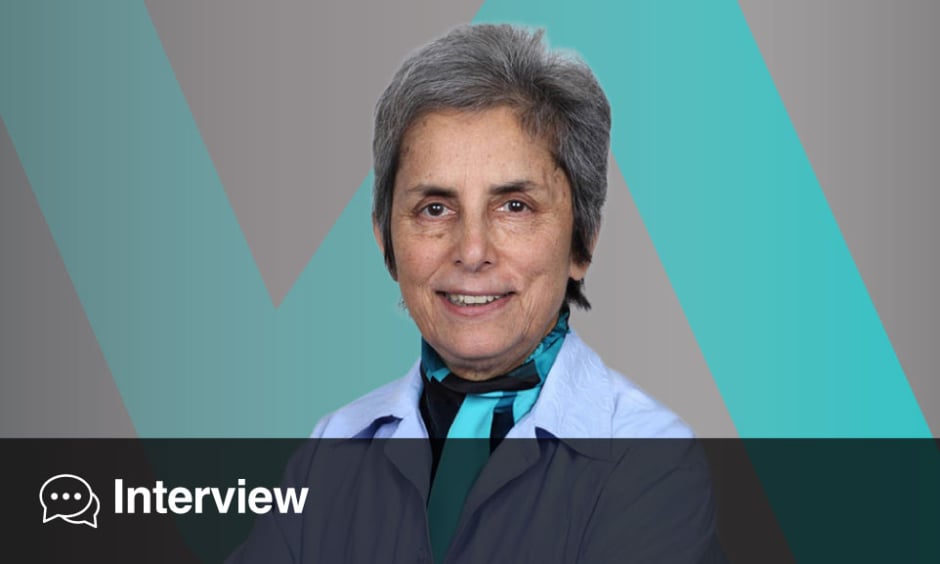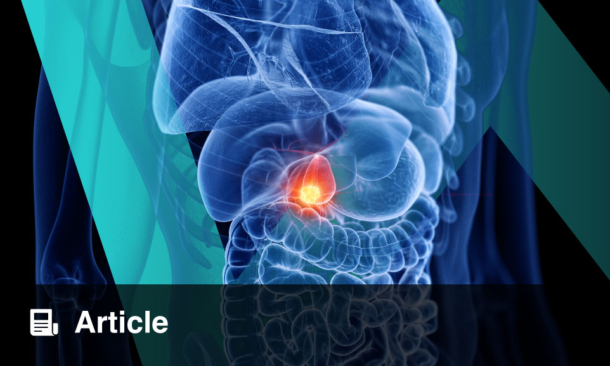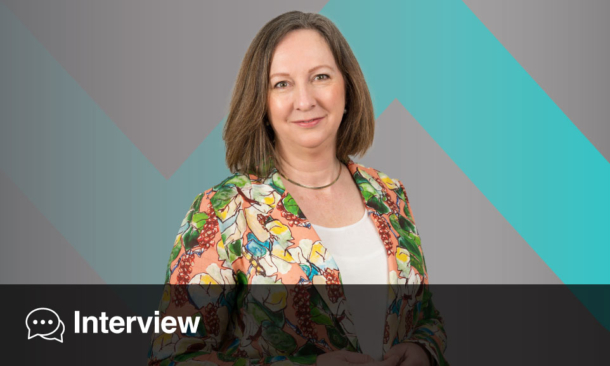Parveen Kumar: Emerita Professor of Medicine and Education, Barts and The London School of Medicine and Dentistry, Queen Mary University of London, UK
Citation: EMJ Gastroenterol. 2025;14[1]:53-58. https://doi.org/10.33590/emjgastroenterol/YCKZ6443
![]()
What first sparked your interest in gastroenterology and where did you train?
Why gastroenterology? For me, gastroenterology is one of the best specialties because of its breadth of interests. It involves the whole of the gastrointestinal tract, as well as the liver, gallbladder, and pancreas. Gastroenterology is fascinating. It covers a huge range of scientific disciplines, for example, biochemistry, enzymology, hormones, intestinal transport, through to the clinical study of major diseases. It also has the practical aspects such as endoscopy and endoscopic procedures. I started in gastroenterology over 50 years ago, and a lot has changed since then. When I began, it was a relatively new specialty, and there was just one ‘gastroenterologist’, a generalist who did everything. Not all hospitals even had one. Now, there are several gastroenterologists in every hospital, often sub-specialising in different aspects of the field, for example, coeliac disease, inflammatory bowel disease, and endoscopy, while hepatology has become a speciality in its own right.
There were very few places to train when I started. The gastroenterology unit at St Bartholomew’s Hospital, London, UK, which was started by Anthony Dawson, Consultant Physician at St Bartholomew’s Hospital, was one where you were ‘invited’ to join, rather than ‘apply’, and I was one of the lucky ones. However, I was the only female for about 20 years! Dawson was an amazing clinician and researcher. He built up a huge team, along with Michael Clark, Senior Lecturer in Medicine at St Bartholomew’s Hospital Medical College, consisting of about 16–18 research registrars and clinicians.
The training involved rotating through different aspects of becoming a gastroenterologist and general physician. We had periods in general medicine (with acute medical admissions), ward work, endoscopy, and 3–6-month research blocks. After 4 or 5 years, one ended up as both a well-trained physician, and a good gastroenterologist. During this time, we all also completed an MD in our particular area of research interest. In those days, MDs were preferable to PhDs for clinical doctors who were also doing research, although some, like myself, went down the academic route and became professors, as well as medical consultants.
You began your research career focusing on small bowel disease. How did understanding of coeliac disease evolve during the course ofyour career?
It has changed enormously. I chose coeliac disease because I was interested in immunology. However, my research turned out to include much more, including genetics and histology (spending hours at the microscope examining self-stained specimens), as well as intestinal transport studies using self-made intestinal perfusion tubes. Those were the early days, and one had to be innovative and find ways of conducting experiments within the limits of the knowledge and technology available at that time. For example, the technique of immunofluorescence was just emerging. I remember seeing something ‘glowing’ on my histological slides and thinking that it was artefact produced by my ineptitude at staining! However, it turned out that I had been looking at the anti-reticulin antibody, which was later described by someone else. It was important at that time, as it became a serological marker used to diagnose coeliac disease.
Coeliac disease has an interesting history. It was once called ‘Idiopathic steatorrhoea’, meaning ‘fatty stools’, as the cause was not known. Going back to the 2nd Century AD, Aretaeus of Cappadocia described a clinical scenario that may well have represented coeliac disease as we understand it today. However, it was not until 1888 that Samuel Gee gave the first accurate clinical description at St Bartholomew’s Hospital (I held an international conference at St Bartholomew’s in 1988 to celebrate this centenary). Later, in 1950, Willem-Karel Dicke demonstrated that gluten in the diet caused the intestinal damage. In 1956, the first preoral jejunal biopsy was performed, and the structural defect was subsequently described fully. Previously, the loss of villi in the small intestine on a patient with coeliac disease had only been observed in surgical specimens.
Our understanding of coeliac disease has therefore evolved completely, from recognising it as a disorder of the small bowel to now being able to delineate exactly what occurs at a molecular level.
Coeliac disease has a multifactorial genesis. It is immunogenetic, with the human leukocyte antigen (HLA) DQ2 (and HLA DQ8, among others) marker present in the majority of patients. This haplotype is also associated with other autoimmune conditions, such as thyroid disease and Type 1 diabetes, which are therefore often seen in patients with coeliac disease. A related skin condition called dermatitis herpetiformis, is an intensely itchy, blistering rash that affects mainly extensor surfaces and shares the same gluten-dependent enteropathy and HLA associations. A gluten-free diet helps both conditions.
How did you diagnose and investigate coeliac disease then and now?
Initially, diagnosis is based on clinical presentation. As the condition affects the small bowel, patients mainly present with symptoms of malabsorption. These include fatigue, weight loss, mouth ulcers, diarrhoea, and nutritional deficiencies, causing, for example, iron or vitamin B12 deficiency anaemia. In my earlier days, patients often presented looking emaciated and very ill, with severe anaemia, torrential diarrhoea, and, in some cases, bone fractures. Nowadays, however, they are often diagnosed with only minor symptoms. There are some long-term complications, for example, affecting bone (osteopenia and osteomalacia) and, very rarely, cancer.
As in adults, children used to present looking extremely ill, with failure of growth, weight loss, a protuberant abdomen, and thin limbs. Thankfully, this is now very rare, as children are identified much earlier with minor symptoms, thanks to the availability of reliable diagnostic tests.
Diagnostic tests include serology and small bowel biopsy. Serological testing has advanced rapidly. The measurement of tissue transglutaminase, particularly tissue transglutaminase 2 IgA, allows non-invasive diagnosis, making a duodenal biopsy almost redundant except in difficult cases.
In the 1960s and 1970s, before endoscopy became available, we used a ‘Crosby capsule’ to take a ‘biopsy’. We would pass a tube down the oesophagus, through the stomach and pylorus, into the second part of the duodenum. The capsule had a tiny internal blade and a rubber diaphragm. Suction with a syringe drew mucosa into an aperture, triggering the blade, and this captured a sample of the lining of the mucosa. We used to pull the tube out of the mouth and examine it under a dissecting microscope, prior to histology! Today, we just use endoscopy, which allows for multiple biopsies to be taken easily, rendering the Crosby capsule redundant. Histologically, the villi of the epithelial cells lining of the small intestine are blunted or completely atrophied.
Dietary management is the mainstay of treatment. It is much easier nowadays, as products in supermarkets are labelled as gluten-free with the Coeliac society’s crossed-grain’ symbol.
Were you often the only woman on the team?
Yes! I was the only medically qualified woman on the gastrointestinal medical team for about 20 years. Now, thankfully, there are many more women in medicine, and medical schools have significantly increased their intakes of female students. Some men often argue against having more women as they say it reduces the work force, but many men also leave medicine, so retention is a broader issue than just gender. However, we must support women to have time off to have a family and then return to work.
In the days when there were very few women, I used to avoid joining women’s societies because I felt we should all be equal, despite gender. Now, I do join women-only societies to help support younger women, as they still face challenges such as bullying, harassment, being passed over for promotions, and the gender pay gap continues to persist. A very sad situation in this century. Surgery, in particular, remains markedly under-represented by women.
Can you tell us about the major advances in gastroenterology during your career?
There have been many advances over the years with better technology, diagnostic tests, imaging, and drug therapies. Endoscopy has been transformative. Imaging has evolved massively, with newer imaging techniques including CT and MRI, and their application to specific invasive procedures. Serological diagnostics have vastly improved, some using immunological advances. Therapies using monoclonal drugs and targeted treatment have changed the treatment scenario!
Disease-wise, I believe that the discovery of Helicobacter pylori was revolutionary. We used to measure gastric acid endlessly, thinking this was the cause of gastric and duodenal ulcers, and then along came this bacterium. Its discovery story was serendipitous, rather like the discovery of penicillin by Alexander Fleming. Helicobacter pylori was discovered by Robin Warren and Barry Marshall, who were later awarded the Nobel Prize for their work.
Inflammatory bowel disease is another area that has seen major advances, as monoclonal antibodies have vastly changed outcomes for Crohn’s disease and ulcerative colitis. In hepatology, we initially had classified hepatitis A, then hepatitis B (often via intravenous exposure), and for years we had a hepatitis which we called ‘non-A non-B’ or ‘post-transfusion’ hepatitis. This was eventually called hepatitis C once the virus had been isolated. Screening for hepatitis C in blood donations therefore came in quite late. Sadly, both hepatitis B and C can progress to chronic liver disease and cancer. Treatment looked bleak, until appropriate antivirals arrived in the last decade or so. I remember a colleague who had built his whole career and reputation on hepatitis C virus research saying, half-jokingly, that a ‘cure’ had ‘ruined’ his research agenda. I told him to pick another bug!
You developed the first MSc in gastroenterology in the UK. What was the reason behind creating this programme, and how has it evolved over time?
As a junior, I thought it would be wonderful to have an MSc in gastroenterology. It took me ages to design the programme, as I wanted to provide a strong foundation of basic sciences, including genetics, statistics, and an approach to critical appraisal, to shape our future researchers. This was followed by clinical modules and a research project lasting about 8–10 weeks, leading to a dissertation and viva. It worked well. We’ve had students from all over the world, and some have continued on to do PhDs. We also run it online, which is useful for those not in London, though I still think face-to-face interaction is invaluable for communication skills.
I have always recommended an intercalated degree to all medical students as they progress through their training. It gives them an extra understanding of research methodology and technology, which can be extremely helpful for their future careers. We now have many medical students undertaking an intercalated MSc in Gastroenterology at Queen Mary University of London, UK.
Many students consider your book, Kumar and Clark’s Clinical Medicine,1 their ‘bible’. What was your motivation for creating it?
As a student, the medical texts in the then medical textbooks were verbose, vague, and unfocused. This made it very difficult to understand and learn medicine. I always thought I would like to write a definite textbook but didn’t think I would ever do it.
I was stimulated to rethink this when, as a research registrar, a letter arrived from some authors asking me to write a gastroenterology chapter for their new book. My supervisor for my post-graduate thesis, Mike Clark, was very against this and tried to dissuade me. He told me to write up my unwritten papers for research I had already done. However, as I persisted in wanting to write the requested chapter, Mike gave up and said he would help me write a textbook. I phoned a publisher I had previously written for and was amazed that they wanted to see me immediately to discuss this! Clearly there was a need for a good medical textbook!
We wrote obsessively, every lunchtime, weekend, and holiday, for about 2.5 years. We were told it would take us about 4–5 years. The early chapters were written by colleagues from St Bartholomew’s Hospital. We standardised the format: bullet points, clear diagrams, algorithms, and tables, but only where the evidence supported them. We rewrote every chapter, making it easier to read and well formatted. We used short sentences consisting of one noun and one verb, to avoid ambiguity. This made it accessible for everyone to read, including those reading it around the world, where English wasn’t their first language. We gave most of the royalties away to the contributing authors and various charities. Since its publication, the book has sold millions of copies and I have been invited around the world to teach, examine, and lecture. People tell me that the book has helped educate generations of young doctors.
When we started writing the book it was in pre-internet times! I cannot now imagine a time before internet now, as it is so easy to get the latest information. We used to fill our car boots with books and journals from the St Bartholomew’s medical school library on Friday evenings with the promise that they would be back on the library shells by Monday mornings 8 am. As it was a new book, we researched every symptom and fact, as errors are often transmitted from book to book, and sketched diagrams on envelopes for the illustrators, spending hours refining new algorithms and tables. The internet made a huge difference, but the workload didn’t change much! Mike and I worked on it for nine editions over more than 35 years. New editors have now taken the task for later editions, but we still read the chapters and proofs.
The success of the textbook, however, was not without its challenges. We faced the daunting task of keeping abreast with the rapid evolution of medical knowledge and practice. We updated the editions to reflect the latest evidence-based guidelines and advances. To ensure that the book remained relevant and comprehensive required ongoing collaboration with a growing team of contributors, each bringing new insights from their specialties. Despite the hard work, the positive feedback from students and clinicians worldwide has been immensely rewarding and has reinforced my belief in the value of accessible, well-structured medical education resources.
You’ve also held prominent leadership positions, from the National Institute for Health and Care Excellence (NICE) to the Royal Society of Medicine (RSM) and the British Medical Association (BMA). Could you tell us a bit more about your work with these organisations?
Before NICE, I served on the Medicines Commission UK, for about 12 years, as Commissioner, then Vice-Chairman, and for the last few years as Chairman. The Medicines Commission for the UK was the top national committee for medicines, established under the Medicines Act of 1959. Other committees scrutinised data, while we were tasked with appeals and decisions on what medicines could go public, be sold over the counter, or become prescription-only. It was a lot of work but enormously interesting. With the advent of the UK joining the EU, these tasks were later taken on by the European centralisation of licensing through the European Medicines Agency (EMA), a situation that had to change again with Brexit.
In 1999, I was invited and then interviewed to be a founding Non-Executive Director of NICE, a new special health authority set up by the then Secretary of State for Health, Frank Dobson, UK Department of Health and Social Care, London, UK, and chaired by Sir Michael Rawlins, then Professor of Clinical Pharmacology at the University of Newcastle upon Tyne, UK. The Medicines Commission focused on the ‘safety, quality, and efficacy’ of drugs, whilst NICE focused on ‘clinical and cost-effectiveness’, in other words how well a treatment works and whether it represents value and is affordable. We had to decide how much we were prepared to spend per patient for a given benefit. It was complex but vital, as everything cannot be affordable within limited budgets.
I have been privileged to serve as President of several organisations, including the British Medical Association (BMA), the Royal Society of Medicine (RSM), The Royal Medical Benevolent Fund (RMBF), and the Medical Women’s Federation (MWF). Each brought different tasks and areas of expertise but taught me a great deal about leadership, new aspects of medicine, and medical politics.
The BMA had both a trade union and a professional side. My time as President was mainly spent on the professional side with education and research (through the Board of Science, which I later chaired after serving as President), holding conferences, meetings, and participating on their international side of charity work. I was on their charities, including the BMA Foundation, and later chaired BMA Giving.
The RSM is a wonderful institution; it’s the one place you meet everyone across specialties. It’s educational, collegiate, and fun, with in-person and online meetings and lecturers covering a wide range of topics. The RSM has many speciality sections. Its educational output is immense. One of the themes for my presidency at the RSM was climate change. We started advocacy work on this in the UK, covering all aspects of climate change and pushing the ‘Greener NHS’ agenda.
The RMBF is the only charity dedicated to doctors, supporting those in distress due to medical or financial difficulties. It was an eye-opener for me to discover how many of our colleagues were struggling and living in devastating circumstances. It really is a wonderful charity and does excellent work in helping doctors and supporting them in their return to work.
The MWF is a charity supporting women in medicine and helping them to advance in their careers, as they remain grossly underrepresented in many specialties. I was honoured to serve as President in its 100th year.
I also serve on other committees and charity boards. I am an Ambassador to the UK Health Alliance on Climate Change (UKHACC), which has over 60 members, including medical colleges and paramedical groups. By advocating with one voice, the Alliance holds greater influence.
My research and our textbook book Clinical Medicine,1 which is used across the world, have allowed me the privilege to travel the world to teach, lecture and examine. With the Royal College of Physicians, I examined for the MRCP (the Membership of the Royal College of Physicians diploma) for many years, and with my medical school, I examined both postgraduate and undergraduate degrees at medical schools abroad. I have also been asked to officially review the standards of education and research in different countries. This ensures an equivalence of standards across the world for both.
It is always a great pleasure to meet colleagues overseas and exchange ideas. Through some of my charitable work, I have visited low-income countries and raised money to set up libraries and hospital wards. I have also supported the twinning of schools and the exchange of ideas between institutions. People are just as passionate about medicine and education all over the world, as we are! However, I am now, of course, conscious of my carbon footprint and conduct as much as possible online rather than travelling overseas.
I have recently finished co-editing with Babulal Sethia, then Consultant Paediatric Cardiothoracic Surgeon at the Royal Brompton Hospital, London, UK, a global health book co-authored with three colleagues and a large network of contributors.
The idea began at the RSM some years ago, when I came across a group of medical students chatting enthusiastically after a talk on global health. I joined them and said: “Why don’t we write a book?,” and then corrected myself and said I had a better idea: “Why don’t you write it?” We eventually gathered around 160 medical student contributors from across the world, representing more than two dozen countries.
I co-edited the book with Sethia, who shares my enthusiasm for tackling climate change problems and shaping the future of healthcare.
I have been extremely fortunate in my career and am most grateful to all who have trained me and helped me along the way. I have met many amazing and inspirational people to whom I am deeply indebted. As doctors, we all learn from our patients, and I certainly learned most of my medicine from them, so I would like to thank them enormously. Lastly, my career would not have been possible without the incredible encouragement and support of my late husband, David Leaver, and my wonderful family.








